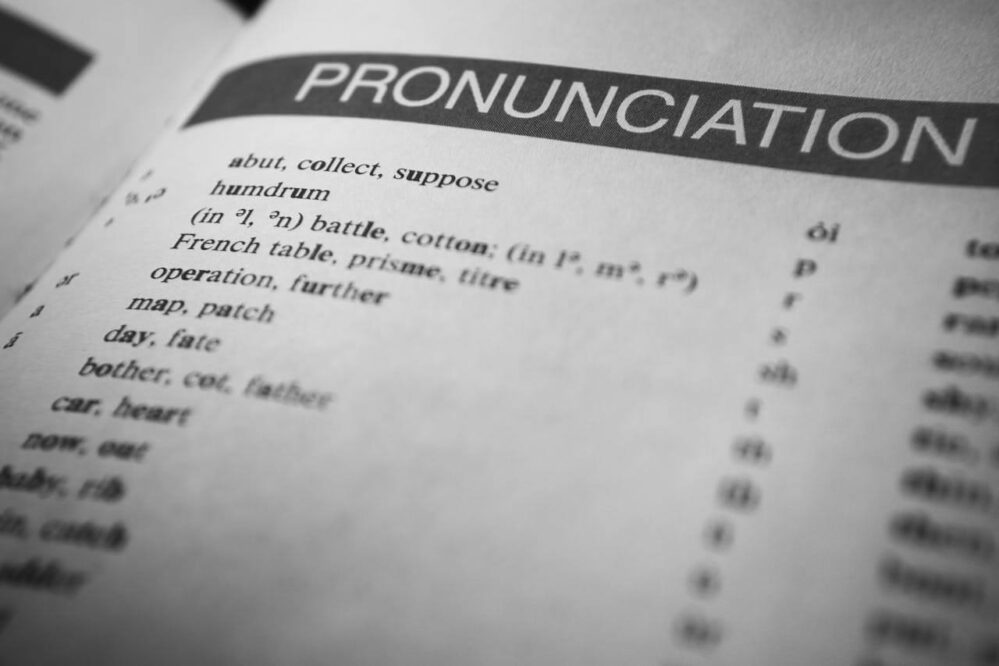English proficiency is a gateway to countless opportunities, allowing you to effectively communicate, collaborate, and connect with people from diverse cultural backgrounds worldwide. But how do you evaluate your English proficiency? The Common European Framework of Reference (CERF) is an international guideline that uses a scale from A1 (beginner) to C2 (advanced) to evaluate language ability.
In this guide, we’ll navigate the different levels of English as a second landuage proficiency, provide tips on learning strategies at various levels, and emphasize the importance of personalized learning approaches.
Beginner Level
English learners at a beginner level have a basic understanding of grammar concepts such as verb conjugation, articles, and prepositions. They also mainly use only basic sentence structures such as subject-verb-object (SVO).
Students at a beginner level focus on acquiring fundamental vocabulary related to everyday topics such as family members, food, greetings, everyday objects, clothes, body parts, farm animals, daily routine numbers, and colors.
Learners at this level are generally proficient enough to:
- Introduce themselves and other people
- Ask and answer questions about simple personal details, such as where they live, people they know, and things they have
- Understand basic directions from natives
- Get around cities by reading simple signs, posters, and notices
- Communicate simply if the other person talks slowly and clearly
- Understand and use common everyday expressions and simple phrases
- Read short, simple texts containing high-frequency vocabulary
- Write about matters of immediate need in simple terms.
Some tips that can be helpful for effective learning at a beginner level include:
- Utilizing apps such as Duolingo and Babbel to build vocabulary
- Using visual aids like pictures or flashcards and real-life objects
- Revisiting and consistently practicing previously learned concepts
- Keeping a journal with conversation topics you’ll likely come across in daily life
- Using games and engaging activities.
According to CERF levels, this stage of English language acquisition includes the A1 and A2 levels.
Intermediate Level
The transition from beginner to intermediate level involves a notable shift in language proficiency and complexity. Intermediate learners have a rich understanding of more concrete topics than beginner-level ones. However, they must still work on expressing feelings and understanding more complex thoughts.
At this level, intermediate learners know more advanced verb tenses, such as past perfect, future perfect, and conditional forms. They also learn how to use the passive voice and broaden their vocabulary.
Learners who achieve this level are able to:
- Describe experiences and events
- Explain opinions and plans
- Understand the main points of texts on familiar topics
- Communicate with other English speakers
- Produce clear, detailed text on various subjects
To continue improving, some strategies that are suitable for intermediate learners include:
- Reading as much as possible in English in the areas you’re interested in
- Listening to audiobooks and podcasts
- Taking practice tests to assess your listening and reading skills, including your range of English grammar and vocabulary skills.
This stage of English language acquisition includes B1 and B2 CEFR levels.
Advanced Level
Advanced ESL proficiency refers to language users who understand a broad range of information and pick on implicit details and meanings. At this level, learners can use idiomatic expressions, add emphasis through cleft sentences or auxiliaries, and use modal verbs and participle clauses. They also learn how to form and use relative clauses to provide additional information about nouns.
ESL learners of an advanced level can:
- Express themselves fluently and spontaneously
- Effectively use language for social, academic, and professional purposes
- Understand longer texts and recognize implicit meaning
- Understand everything within the language with ease
- Read complex texts at speed.
Here are some tips on achieving and maintaining an advanced proficiency level and becoming fluent in English:
- Immerse yourself in advanced English by watching movies and TV shows and conversing with English-speaking friends or colleagues.
- Work on your pronunciation by utilizing resources like YouGlish, which allows you to hear any sentence in various English accents.
- Consider a significant lifestyle change, such as relocating to an English-speaking country for a few months, if possible.
According to CERF, the advanced English proficiency level includes the C1 and C2 levels.
✅ Request information on BAU's programs TODAY!
Challenges and Solutions
As an ESL learner, it’s crucial not to be dismayed by the challenges you’ll encounter at various proficiency levels. Overall, some of the most common challenges you may face include:
- Language proficiency challenges due to limited vocabulary and language skills: To overcome this challenge, you can utilize audio materials, active listening exercises, and conversation practice.
- Motivation and confidence issues after moving to complex intermediate levels and concepts: To reignite your enthusiasm and motivation, you can try tracking your progress and setting clear milestones to work towards.
- Lack of interaction with native speakers which leads to minimal exposure to real-world situations: To overcome this challenge, you should participate in group discussions, language exchange programs, and conversation practice sessions.
- Cultural and linguistic barriers, which can lead to misunderstandings and confusion: To overcome this challenge, employ podcasts, videos, and TV shows to gain exposure to real-life language use.
Tailoring Learning Strategies
As an ESL learner, it’s important to acknowledge that everyone has different proficiency levels, learning styles, and goals. Personalized learning approaches are the best way to tailor the learning process to meet your specific needs and preferences, which can help you boost motivation and confidence and improve your learning outcomes.
To customize your learning strategies, determine whether you’re a visual, auditory, or kinesthetic learner. Once you know your learning style, you can experiment with different methods, such as flashcards, podcasts, writing exercises, and more. Additionally, it’s important to incorporate different resources into your learning process, such as textbooks, language apps, and online courses. By exploring various resources and methods, you can find what works best for you and enhance your language acquisition journey.
Setting realistic goals is also essential for ESL learners. Achievable and measurable goals will help you stay motivated, give you a sense of accomplishment, and allow you to track your progress more accurately. If necessary, you can adjust your learning strategies to stay on track and continue making progress.
Conclusion
In order to master English as a second language, one needs to grasp vocabulary, understand grammar rules, and refine their writing skills. With the diverse spectrum of ESL proficiency levels, from beginner to advanced, various strategies are available to cater to learners at every stage of their language acquisition journey.
No matter where you currently stand in your proficiency, approach the journey with curiosity, knowing that every effort you put in brings you closer to your goals. Embrace the myriad opportunities that come with English proficiency and explore our ESL programs to further enhance your skills.
Frequently Asked Questions (FAQs)
How can I determine my current English proficiency level?
You can determine your current English proficiency level by taking standardized tests such as the TOEFL or IELTS, or by using various free online assessment tools.
How long does it typically take to progress from one proficiency level to the next?
The exact time it takes to progress from one proficiency level to the next depends on your learning, methods, prior knowledge, and the time you can allocate to practice.
How do I know when I’ve reached an advanced level of English proficiency?
You know you’ve reached an advanced level of English proficiency when you can understand the vast majority of spoken or written English you encounter daily and speak fluently in almost any environment. Moreover, you make rare errors and can grasp the subtler aspects of tone and pacing, even in complicated text or situations.













